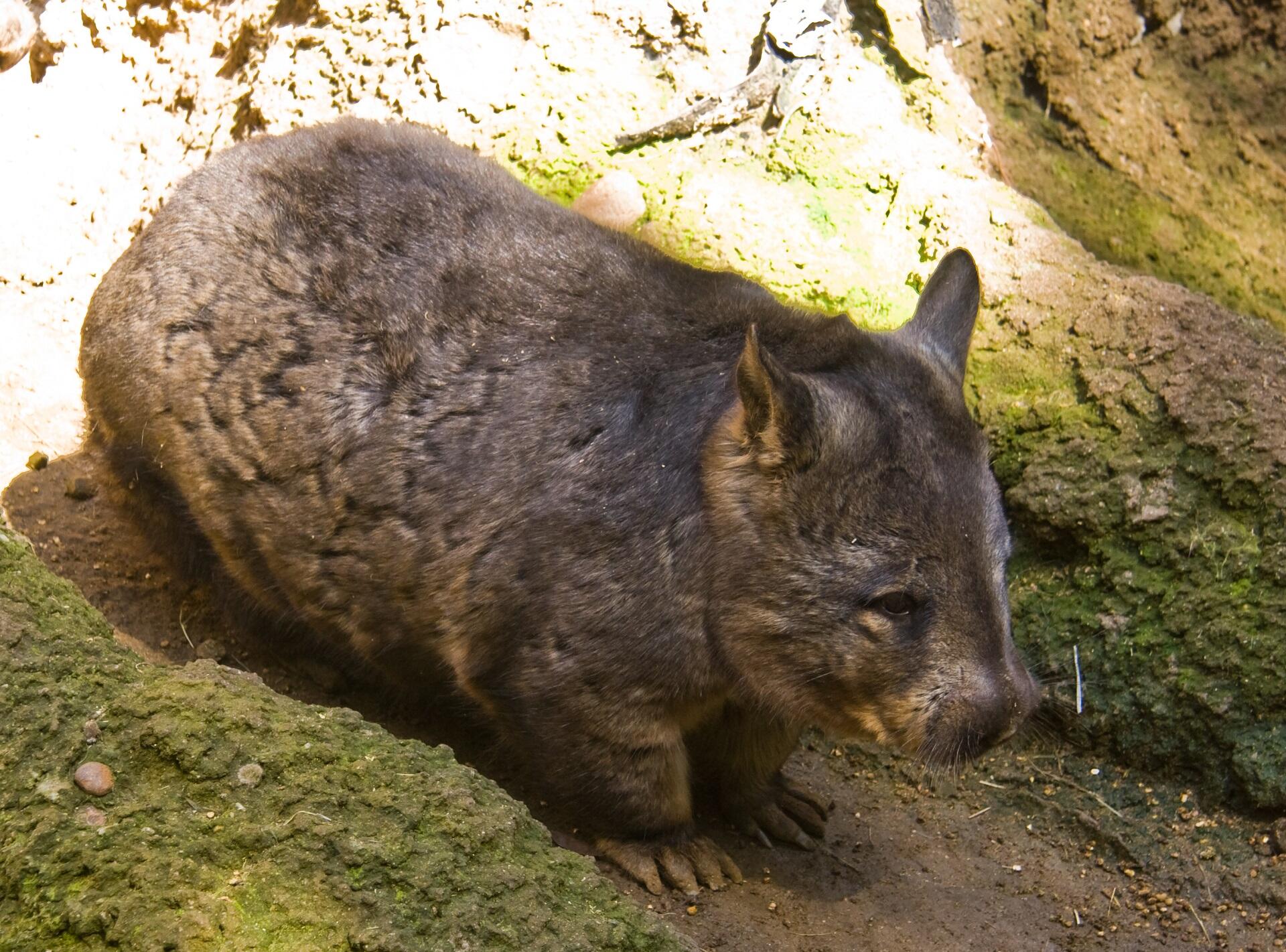Australia has no native hoofed animals, monkeys, cats or bears. The country has no native dogs, either. However, we have dingos, and about half of our mammals are marsupials; we have native birds, reptiles, and insects, too. South Australia is home to many of these species.
| 😻 Animal | 📛 Biological name | 📍Only in SA? | 🔍 Characteristics |
|---|---|---|---|
| Southern Hairy-nosed Wombat | Lasiorhinus latifrons | No | Stocky build Flat claws Short stature, made for digging. |
| Piping Shrike | Gymnorhina tibicen telonocua | No | White back Shorter bill Smaller wings |
| Leafy Seadragon | Phycodurus eques | Yes | Over sandy patches Sometimes in grass or kelp. |
| Rakali | Hydromys chrysogaster | No | Carvivorous, preferring water wildlife Flat head and webbed feet Waterproof fur |
| Grey-headed Flying Fox | Pteropus poliocephalus | No | Australia's largest bat Dark grey body, light grey head Does not echolocate |
| Rosenberg's monitor Lace monitor Gould's Sand goanna | Varanus rosenbergi Varanus varius Varanus gouldii | No | Large reptiles Live in burrows or forests Can climb trees |
| Red-bellied black snake Eastern brown snake Pygmy copperhead Little whip | Pseudechis porphyriacus Pseudonaja textilis Austrelaps labialis Suta flagellum | No | All are venomous Some grow to ~2m Eat frogs, lizards, or mammals (depending on species) |
| Brush-tailed Possum | Didelphis vulpecula | No | Live in wet, foresty areas Active at night Eats a variety of leaves and grasses |
| Fat-tailed Dunnart | Sminthopsis crassicaudata | No | Carnivorous One of the smallest marsupials Tail is uniformly fat from base to tip |
| Sugar Glider | Petaurus breviceps | No | Adapted back feet to hang from tree limbs. Prefers nectar and sweet saps. Omnivorous |

Southern Hairy-nosed Wombat
This is South Australia's emblem animal from the mammal class. It's the smallest of the three wombat species, whose young have trouble surviving Australia's harsh dry seasons. Though these animals are on the 'not endangered' list, conservation efforts are ongoing to ensure the species' survival.
This emblem animal eats only native grasses. It will not eat introduced grass species.
Just like a picky pet that insists on a particular food, wombats turn their noses up at foreign plants. Their diet is relatively poor because of that. They thrive thanks to a well-adapted gut biome, despite being so selective.
Piping Shrike
Magpies exist all over our country, but they all have slightly different markers. Also, their feeding and habitat preferences vary, depending on where they live. South Australia's magpies make their homes on Mount Loftie. Their beaks are relatively short, to suit their prey.
These birds will eat anything. They dine on beetles, worms, and spiders, as well as fruits and nectar. They're clever animals that know how to avoid their preys' toxins.
This bird belongs to the Australian magpie family, but is distinct from other sub-species. We know it better as the white-backed magpie, and often wrongly associate it with the magpie lark.
New South Wales counts one of Australia's most iconic animals, the kookaburra, as their emblem bird. Its distinctive call often forms the soundtrack of Australian lore. We hear in movies, podcasts, and adverts.
Leafy Seadragon
South Australia's marine emblem animal is elegance embodied. Its many 'leaves' propel it through its aquatic environment, they serve as camouflage from prey, too. This creature is only about 20cm long, with an extended snout. It uses this tubular opening to suck up it prey.
Its species relative, the weedy seadragon, lacks many of our leafy variety's regal features:
Leafy seadragon
- many long, well-developed appendages
- relatively large
- yellow-brown colour
- limited range
Weedy seadragon
- less developed appendages
- smaller
- reddish, with purple and yellow stripes
- wider range
Neither has a prehensile tail. Unlike their seahorse cousin, they cannot use the tails to anchor themselves to anything. However, like seahorses, the males take care of the eggs after mating, and leave their newly-hatched offspring to their fates. Outside of mating, the leafy seadragon leads a solitary life.
Rakali
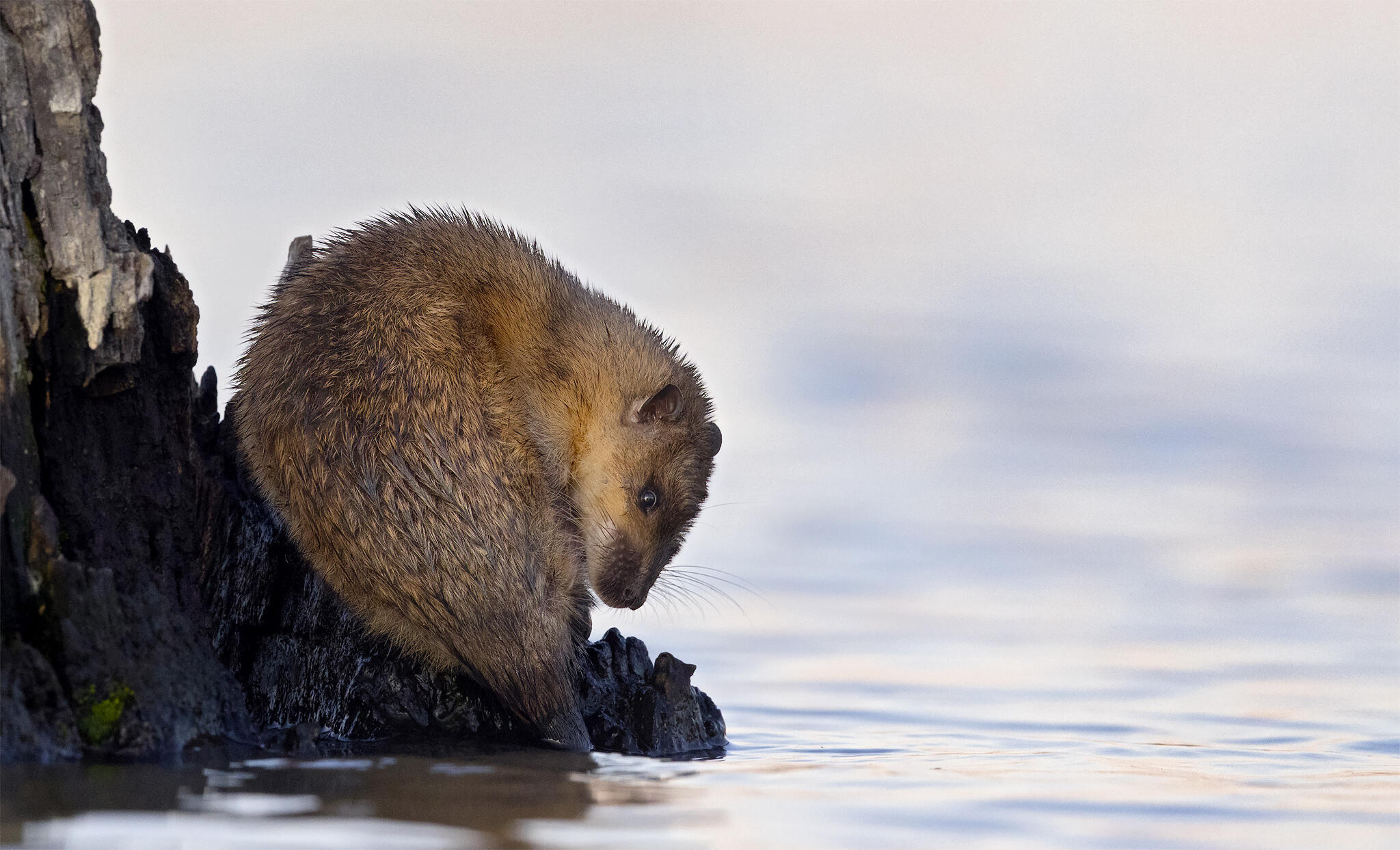
Newly-arrived Australians always considered these rodents nuisance animals. They hunted the small foragers relentlessly, making coats out of their small pelts, particularly when imported furs were banned.
Rakali were nearly driven to extinction, so much so that the government issued an order of protection. Today, these small animals are not threatened; it seems we've learned to live with them. In fact, we've given them many names.
We call them rabe, Australian otters, and water rats.
Aboriginal Peoples have 54 different names for them.
In 1995, the Australian Nature Conservation Agency surveyed all the names assigned to the creature. They recommended 'rakali', the Murray River People's name. That's what we call them today.

Grey-headed Flying Fox
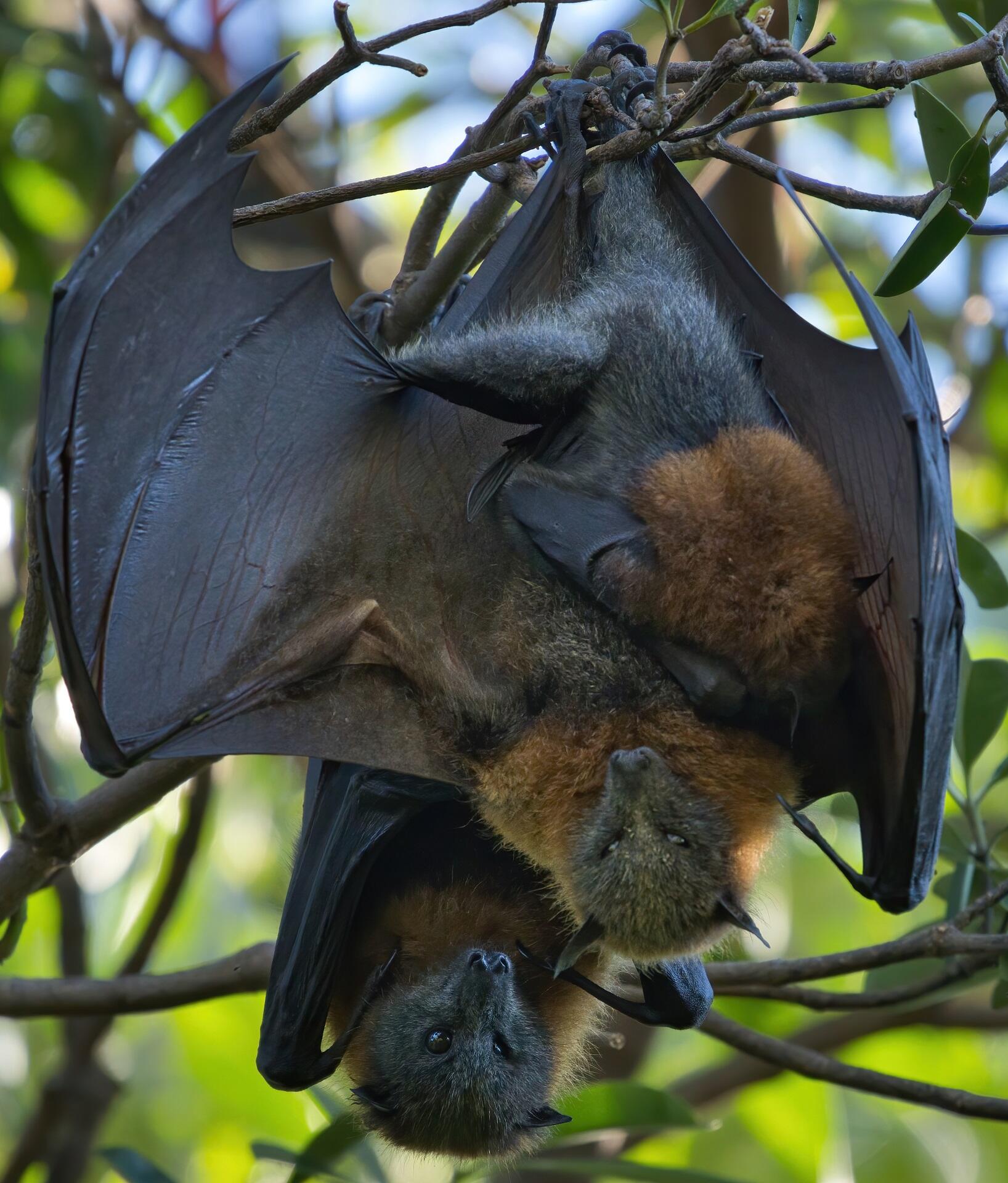
South Australia wildlife counts many bat species among its numbers, but none are as big as the grey-headed flying fox. This mammal's habitat rings Australia's southeastern coast, from just east of Adelaide, to Gold Coast.
It's indiscriminate about its habitat. These bats will live in/around urban infrastructure or in woodlands and rainforests. Access to food determines where they set up their homes.
Easy reach to 187 types of fruit, nectar and pollen is enough to entice a colony. In these respects, they are much like their relatives:
little red flying fox
the smallest of the bats
black flying fox
also called black fruit bat
spectacled flying fox
also called spectacled fruit bat
South Australia shares its bat population with New South Wales. That state's unique animals list further includes the eastern bent-wing bat, which is also threatened.
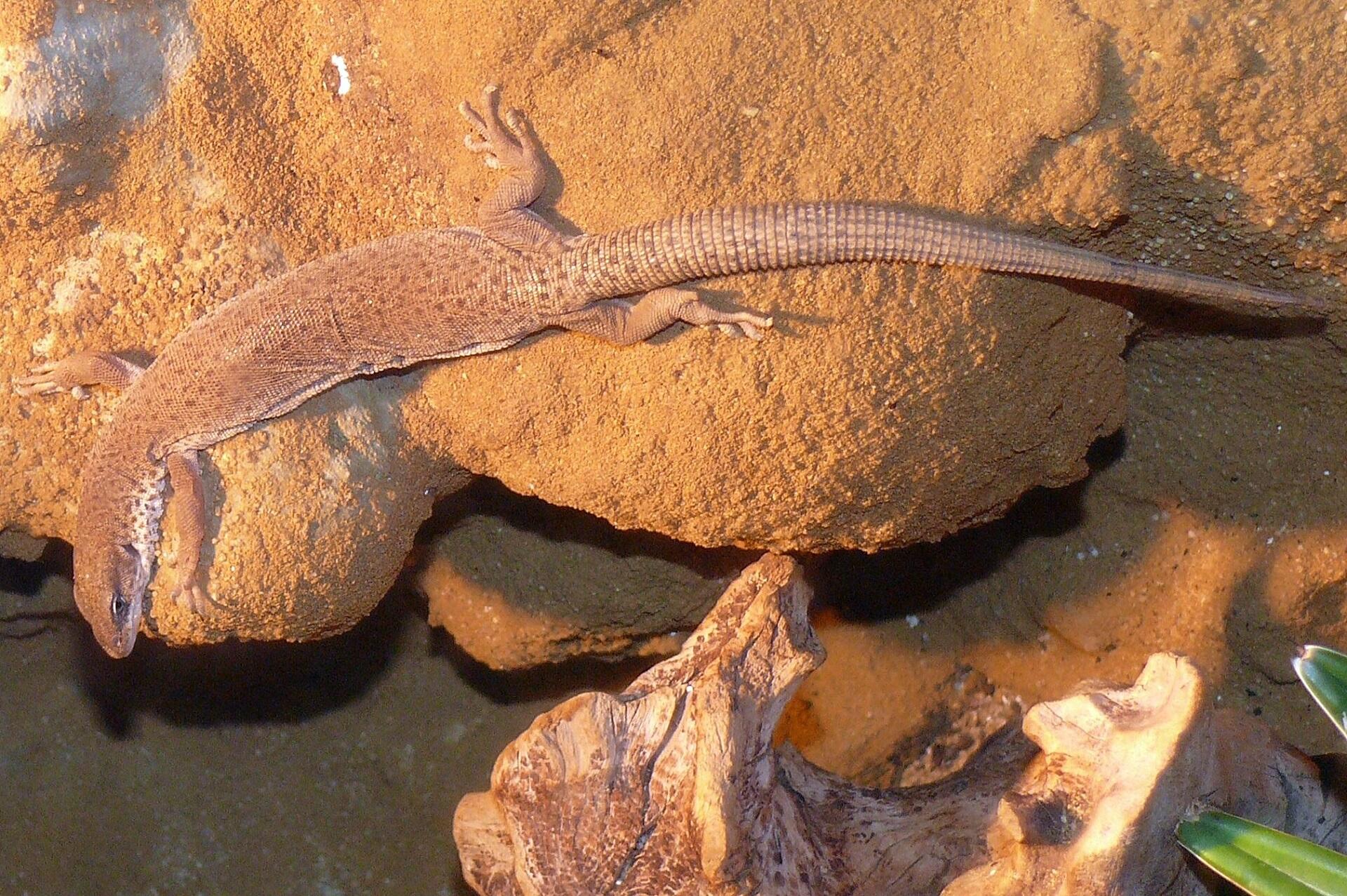
Goannas
The Australian soil and environment are perfect for reptiles of all types. Our list of native goanna species is long but, the South Australian animals of this class count only three:
Heath goanna
- also Rosenberg's monitor
- large and fast
- dark colour
- live in low-lying areas
- eat anything smaller than itself
Gould's Sand goanna
- also racehorse goanna
- slightly smaller
- orange colour
- lives in burrows
- eat anything smaller than itself
Lace monitor
- also called tree goanna
- very large
- patterned scales
- live in trees
- eat carrion
These reptiles have forked tongues, like snakes do. They 'taste' the air as they forage for food. These carnivorous animals favour a diet of mice and other small rodents, but may snag animals as large a rabbit.
At one time, these and other goannas roamed across our state. Today, they are still present, but do not count among the Adelaide animals we routinely see.
Snakes
As noted above, the Australian environment is perfect for reptile life. Among the animals in South Australia, we count four snake species.
Eastern brown snake
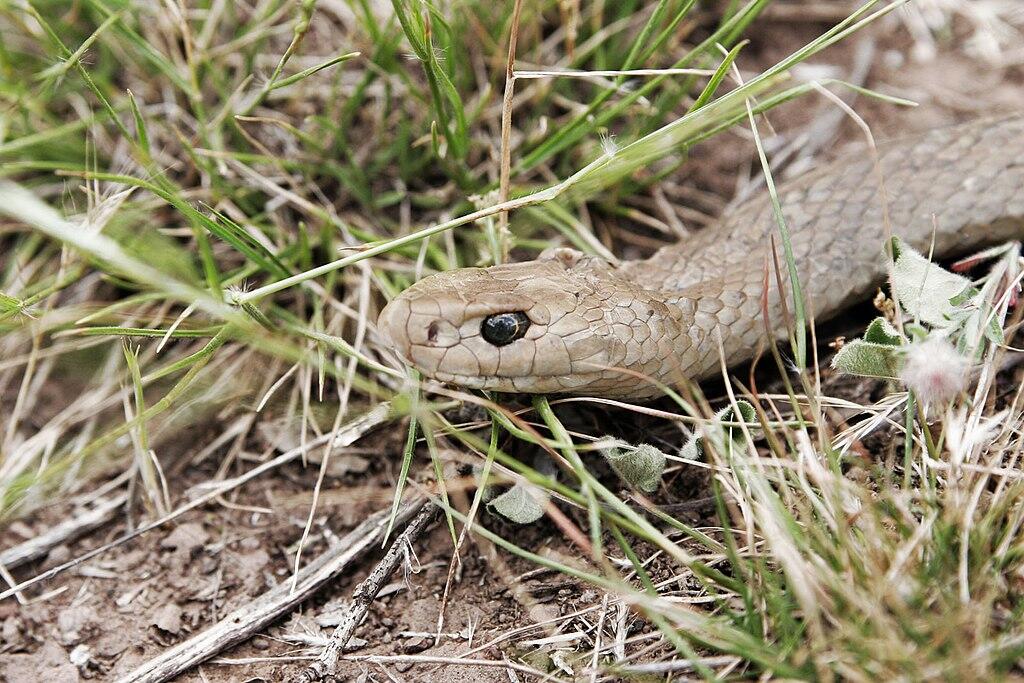
- extremely venomous
- grow to ~2m long
- like human habitats
- eat mammals, birds, other snakes
Red-bellied black
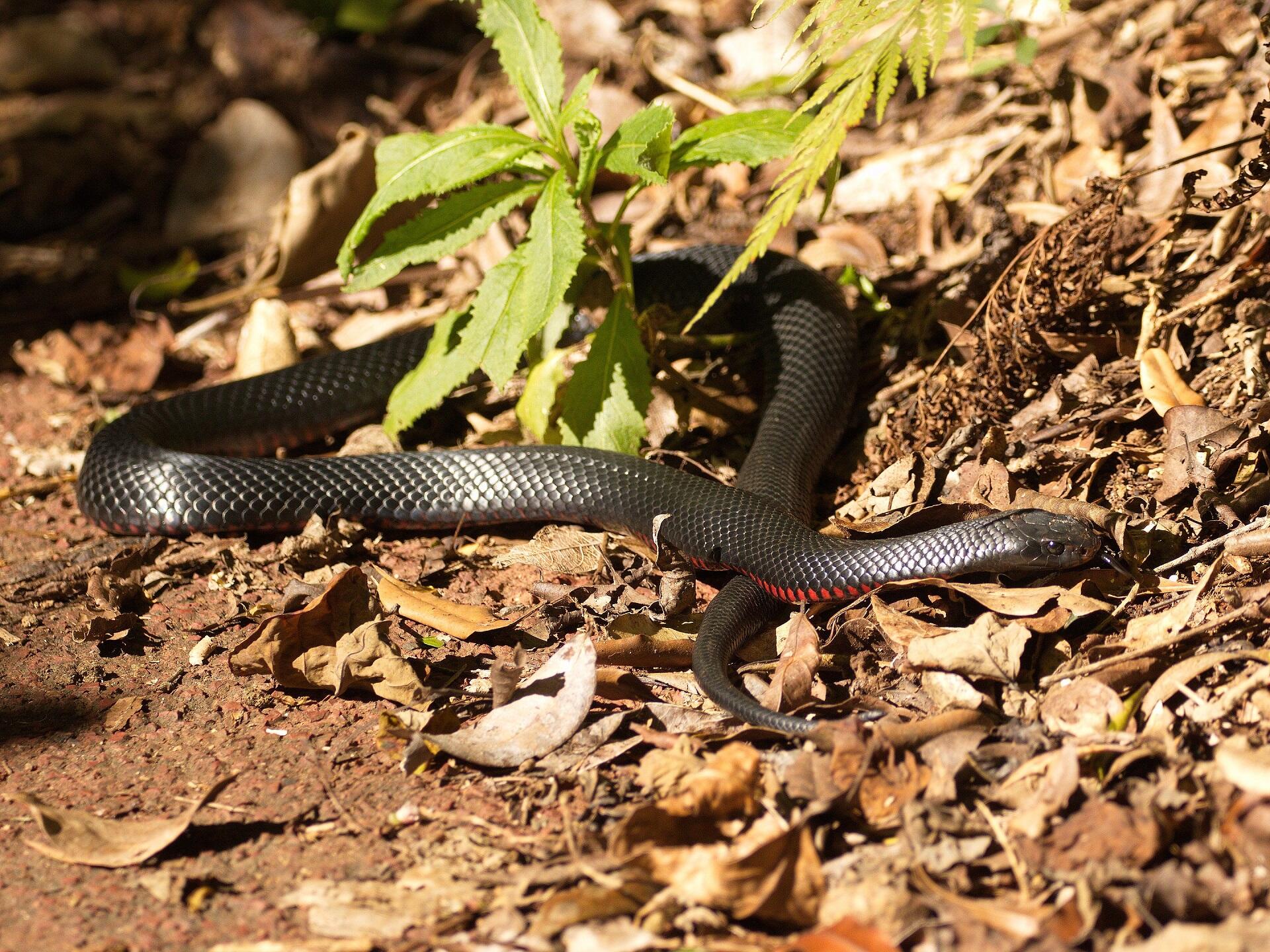
- highly toxic
- grow to ~2m long
- found near water
- eats mainly frogs
Pygmy copperhead
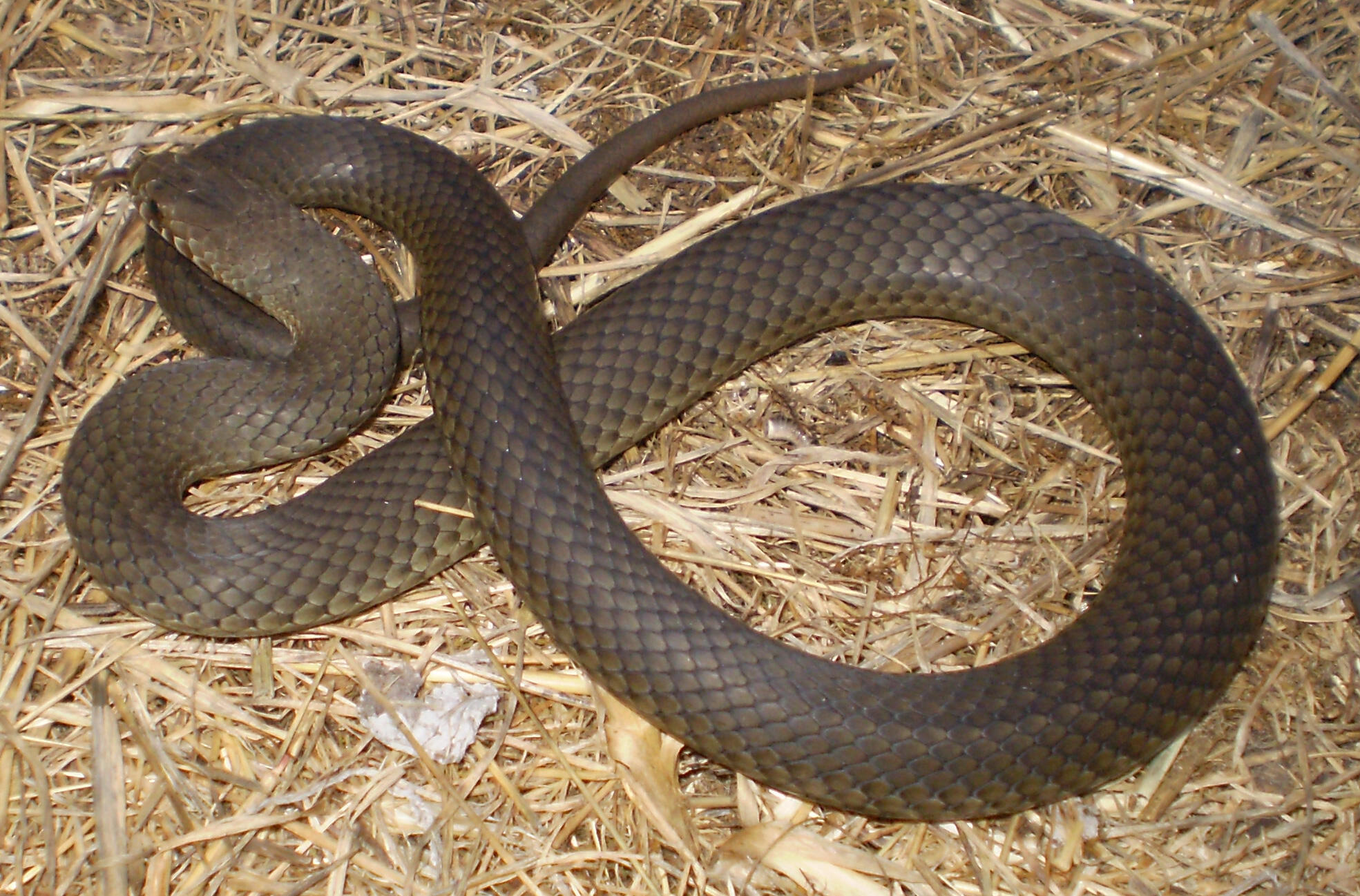
- extremely venomous
- grow to ~80cm
- found in moist, cool areas
- eat lizards, frogs
Little whip
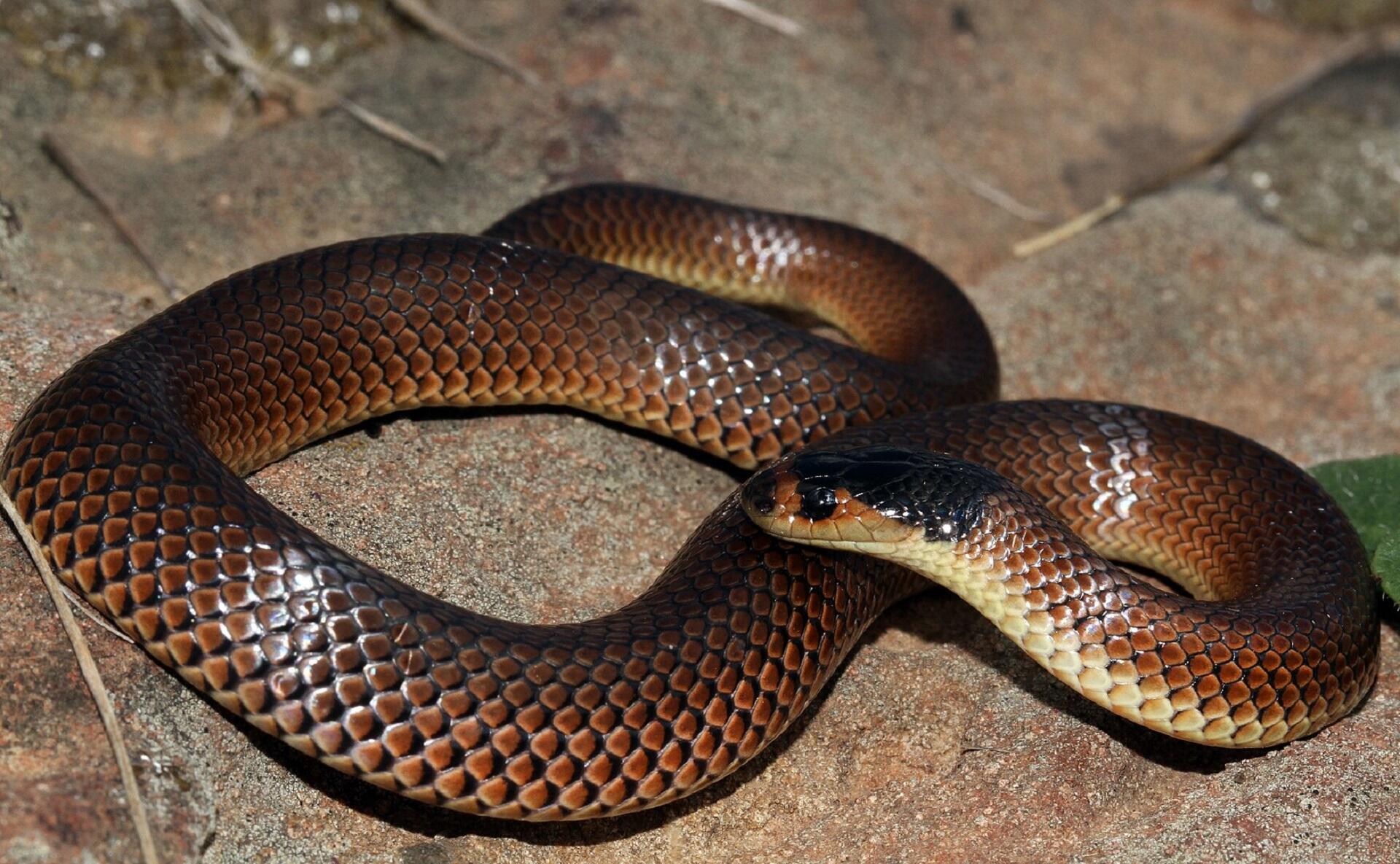
- venomous, but harmless to humans
- grow to~45cm
- found in grasslands and woodlands
- eat lizards and frogs
All four are venomous, but suffering a bite isn't likely - except, maybe from the eastern brown, which likes human homes. Otherwise, these animals are shy and cautious. They would rather avoid having to bite any human than risk capture or death by being too aggressive.
Western Australia counts many snakes among the state's most distinctive animals. Like those found in and around Adelaide, they're typically venomous. So, it pays to be careful.
Brush-tailed Possum
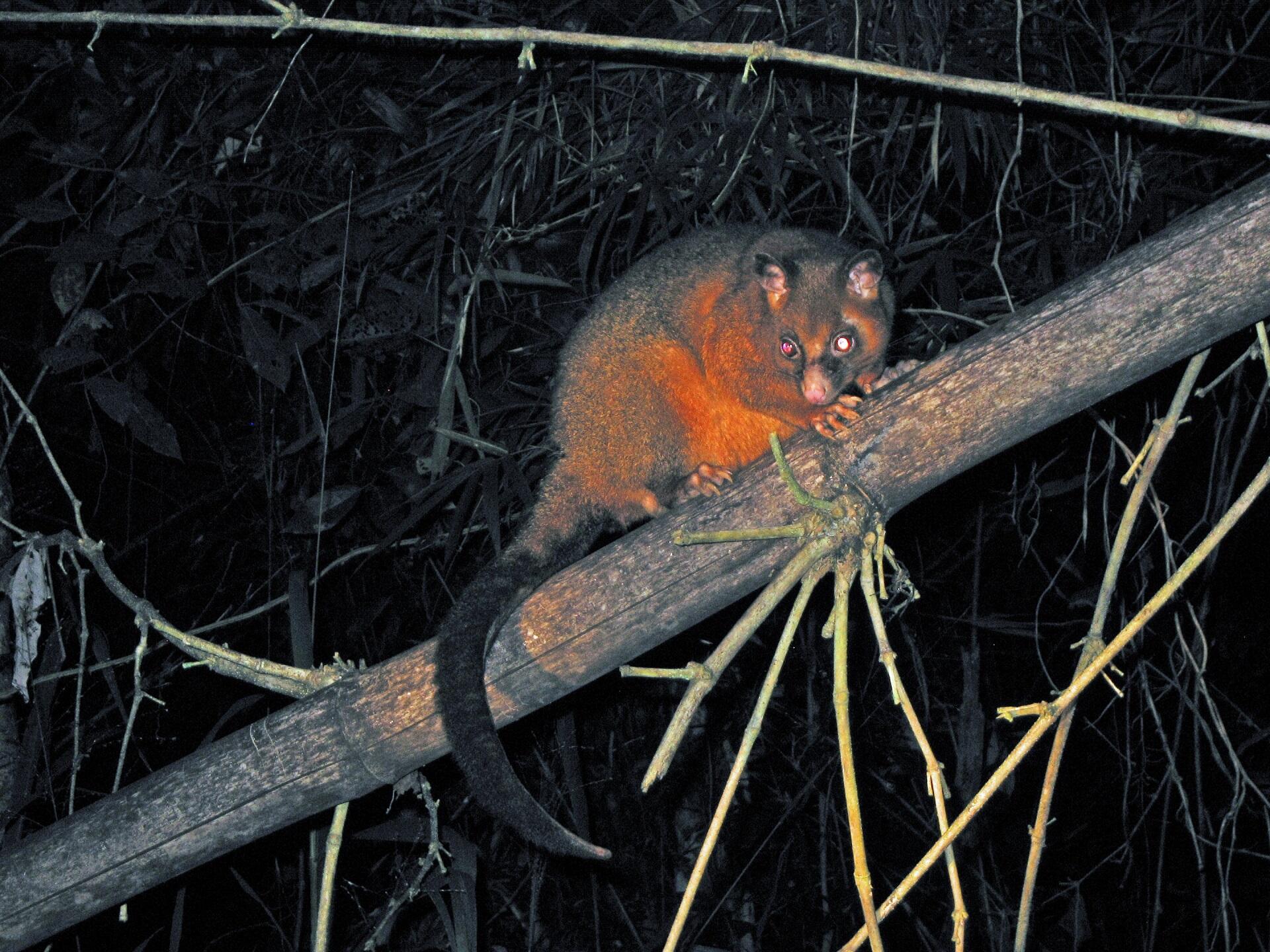
Possums are also common across our country's wildlife scene, but not so much in wildlife South Australia circles. As urbanisation encroaches on these animals' habitats, they move further away from population centres.
They prefer to live in moist areas, typically at higher elevations. They sleep in tree hollows during the day, scampering around the forest underbrush for food - mainly eucalypt and acacia leaves, and mates at night.
South Australia's wildlife management worries about possums being affected by human habits.
They urge people to keep pet food away from doors, lids tight on rubbish bins, and to avoid feeding them. Citizens should also protect their fruit/vegetable gardens from these hungry possums.
These possums are also a part of Tasmania's wildlife scene. Like here, they tend to be nuisance animals. So much so that the state has issued a booklet on proper possum shooting practices.
Fat-tailed Dunnart
This tiny marsupial looks more like a mouse than its quoll cousins. They also have a relatively short lifespan. Males live only 15 months, and females just three months longer. In that short time, they produce two litters of around seven pups.
These marsupials' tails don't taper to a point, like their cousins' do.
They get fat close to the tail's base, and remain thick to the tip.
That fat tail is a food storage device, to sustain them during lean times. These carnivores eat spiders, beetles, frogs and small reptiles. They, in turn, are prey to domestic and invasive species, such as foxes, cats, and other feral animals.
Sugar Glider
As a native species, this glider enjoys protection under our conservation laws. However, it is not considered endangered. It enjoys a fairly wide distribution, around southeast Australia and up the coast. However, only the southeastern corner of our state.
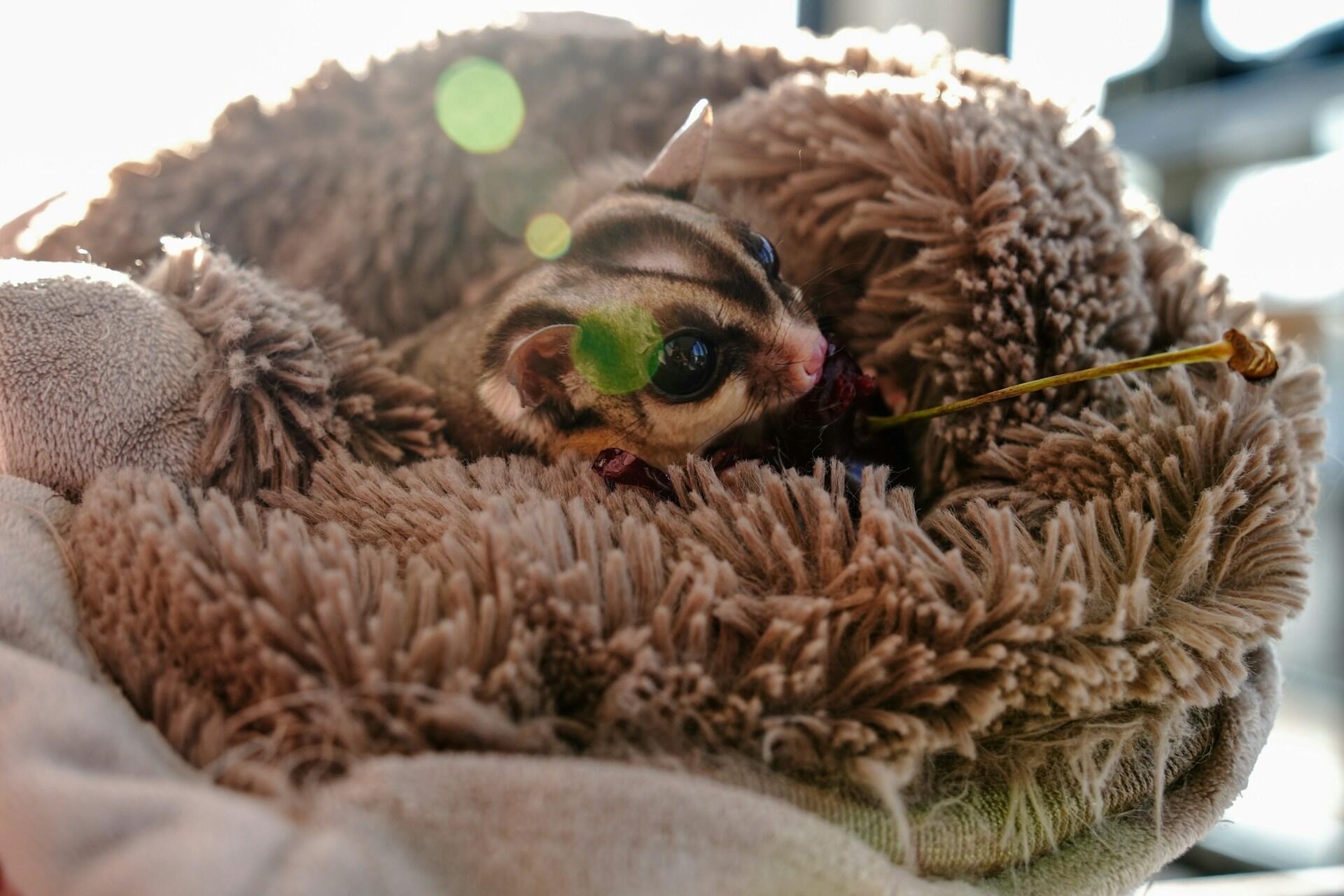
This gliding possum requires a balanced omnivorous diet. Half of their food intake is insects; the other half is fruits and veg. If not for this balance, these animals' health would rapidly deteriorate.
South Australian law permits keeping gliders as pets. However, they must receive proper nutrition.
South Australia's neighbour is home to one of the most unusual gliders. It folds its forearms under its chin as it glides, giving it a triangular silhouette while midair. Victoria's wildlife catalogue makes the greater glider one among its remarkable animals.

